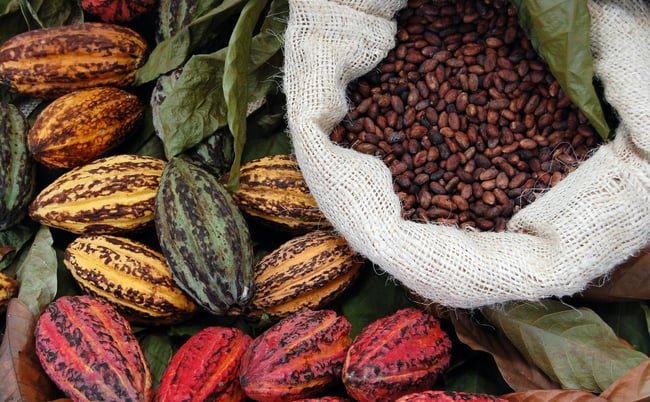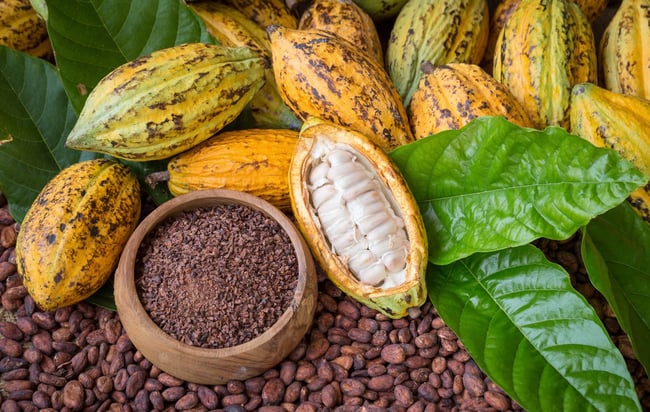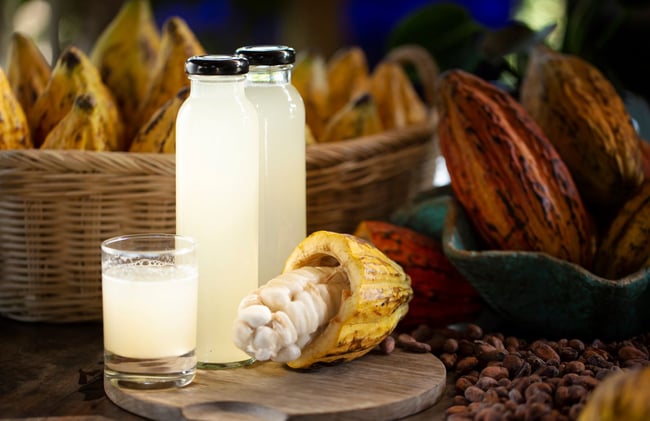
Kakaofrucht, frisch
1 pcDelivery to your door
We source locally for the freshest groceries you can trust.
- Description
- Composition
- Similar products
- More from this brand
- Recipes
Far from "Ciao Cocoa"...
... exclusively with us you will find fresh cocoa beans as a whole fruit!
1500 B.C. THE OLMECS settled in today's Mexico. They are considered the first high culture of the region and were probably also the first people to use cocoa and process it into a simple drink. The Maya took over the cocoa knowledge from the Olmecs, they called cocoa slightly abbreviated "kakaw". For them, cocoa was divine, probably reserved only for the nobility and was also used as currency.
For the Aztecs, cocoa was also something divine and was used as a currency. They gave it the name "Xocólatl" , which means bitter, spicy water. The drink was cooked and served with various spices such as chili. From 1519 the Spaniards under Hernán Cordes occupied the Maya and Aztec territories. He himself was not responsible for the import of cocoa into Europe but a group of monks. They brought the cocoa to the Spanish royal court as gifts from the Maya only years later.
Origin
The cocoa bean is the seed of the cocoa fruit of the cocoa tree (Theobroma cacao). The natural environment of the cocoa tree is the rainforest. The Ivory Coast and Cameroon in particular are among the largest producers of the special fruit. However, it can also be found in South America, Central America, the Caribbean and Southeast Asia including Oceania.
The cocoa tree feels most at home in the shade of large trees in conjunction with a functioning ecosystem. Often cocoa is grown against its nature in monocultures, which is why they have to be heavily watered and fertilized in order to produce economically at all. The cocoa tree bears fruit all year round. A special feature is that cocoa fruits in different stages of ripeness hang on the same tree at all times. The ripeness can be recognized by the color but is different for all varieties. Basically, yellow, orange and red fruits are ripe. The cocoa fruit resembles a large, elongated lemon or honeydew melon and weighs between 300 and 1000 grams depending on the variety. A cocoa fruit contains up to 50 beans. The cocoa beans are embedded in white pulp that tastes very sweet and is reminiscent of the taste of lychees.
The way from the bean to chocolate
The raw cocoa beans are fermented, then cleaned and gently roasted. The cocoa beans only get their chocolatey taste through careful roasting. The roasted cocoa beans are crushed with a crusher. The shell is also removed. The resulting pieces of the cocoa beans are also known as cocoa nibs and are the basis for further chocolate production.
The nibs are ground so finely and for so long in the melangeur or in the conching machine that the cocoa beans heat up and the cocoa butter escapes. The long rolling changes the consistency of the mass and becomes increasingly liquid due to the cocoa butter. This process can take up to 96 hours. This purely mechanical process significantly changes the taste of the cocoa beans. This allows the taste and intensity of the aromas to be precisely adjusted. During conching, sugar and cocoa butter are also added. The crystal structure of the mass is important in order to create the desired bite and melt.
But it doesn't always have to be chocolate. What many probably don't know is that you can also press a juice from the beans!



